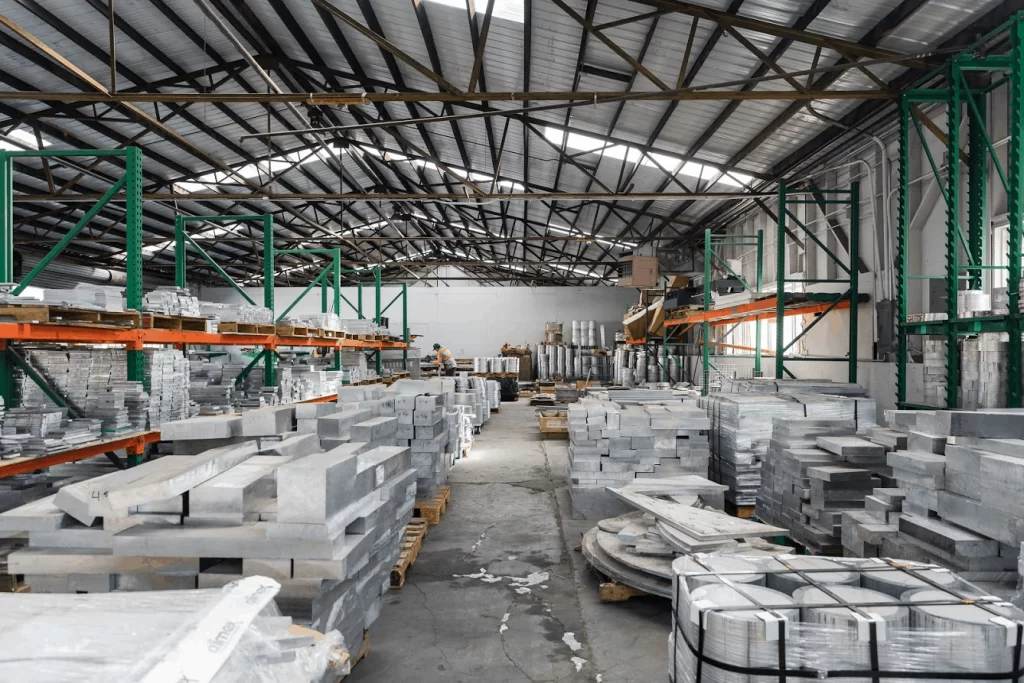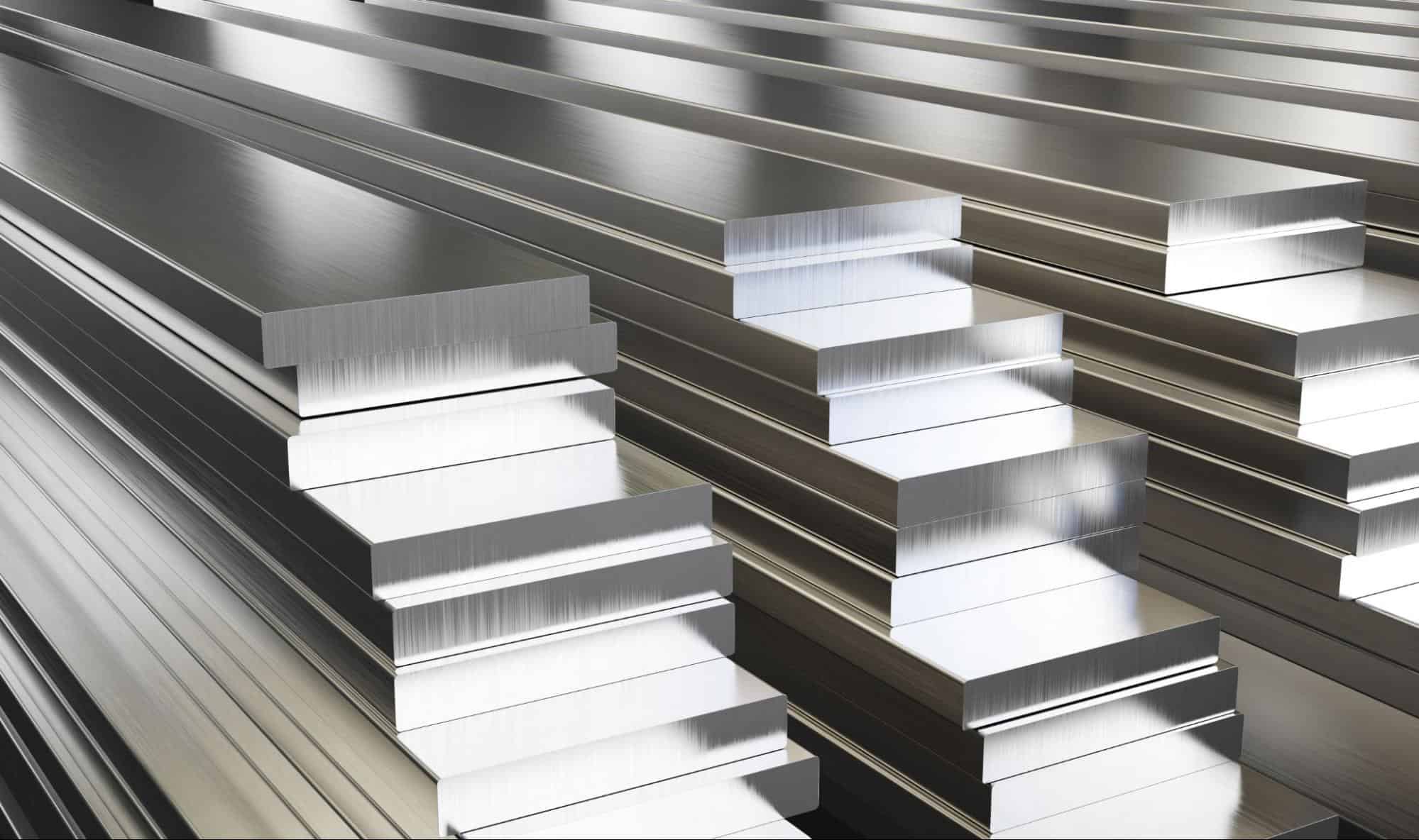Did you know that aluminum is the second most used metal on the planet, only behind steel? This lightweight and durable metal is crucial in industries ranging from aerospace to everyday consumer goods.
Often chosen for its weight-to-strength ratio, aluminum is one of the most abundant and versatile metals used in manufacturing. Different types of aluminum grades, particularly wrought aluminum alloys, are selected for specific applications due to their tailored properties.
Manufacturers can enhance certain characteristics, such as thermal conductivity and strength by adding elements like zinc, copper, magnesium, manganese, iron, and silicon to pure aluminum alloy.
The percentage of alloying elements can significantly influence the material’s properties, sometimes containing up to 15% alloying elements by weight.
Additionally, heat treatment processes further refine the performance of these alloys, making them indispensable in modern engineering and design.
A Standard Method for Indicating the Different Aluminum Grades
Aluminum alloys are categorized by an industry-standard four-digit number that distinguishes them based on their primary alloying elements. The first digit identifies the series or type of aluminum alloy. Here’s a detailed look at some common aluminum series.
2000 Series: Copper as Primary Alloying Element
The 2000 series uses copper as the primary alloying element, making it heat-treatable to enhance strength and toughness. Although this improves the alloy’s workability, it also reduces its corrosion resistance compared to other aluminum grades. Aluminum 2024, a widely used aircraft alloy, exemplifies aluminum copper alloys in this series.
5000 Series: Magnesium as Primary Alloying Element
In the 5000 series, magnesium is the primary alloying element, providing moderate to high strength and excellent corrosion resistance, especially in marine environments. These alloys, such as aluminum 5083, also offer good weldability and are used in marine structures and transportation applications, benefiting from their good corrosion resistance.
6000 Series: Magnesium and Silicon as Primary Alloying Elements
The 6000 series alloys incorporate both magnesium and silicon, making them heat-treatable for improved strength. These versatile silicon alloys are commonly used in welding fabrication, extruded architectural components (e.g., windows and doors), and structural applications such as truck and marine frames. Aluminum 6061 is the most widely used aluminum grade in this series.
7000 Series: Zinc as Primary Alloying Element
The 7000 series employs zinc as the primary alloying element, often combined with smaller amounts of magnesium, copper, and chromium to create heat-treatable, high-strength alloys.
Aluminum 7050 and 7075 are notable examples of aluminum grade alloys used extensively in aircraft manufacturing due to their exceptional strength and toughness. These alloys often have lower thermal conductivity compared to pure aluminum but are valued for their high strength-to-weight ratio.
Enhancing Aluminum Alloy Properties through Heat Treatment
Different aluminum grades can be further optimized through heat treatment processes. This allows for enhanced properties such as increased strength, improved thermal conductivity, and better overall performance in specific applications.
By understanding these aluminum grade series and their specific properties, including how cast alloys and wrought aluminum alloys differ, manufacturers and engineers can select the most suitable aluminum grade for their applications, ensuring optimal performance and durability.
|
Top-Grade Aluminum for Every Purpose and Industry |
||
|
New Aluminum Plate 6061 |
New Aluminum Rectangular Bar |
All Aluminum Shapes |

|

|

|
|
Customizable thickness: Measure in inches. You can get various options for all industry applications.
Can be cut to specific shapes and sizes: Excellent weldability to cater to unique project needs. Corrosion resistance: Grades like 6061-T651 are perfect for marine hardware applications that require superior rust resistance. |
Environmental resilience: Due to its heat treatable nature, 6061 aluminum does well in extreme conditions.
Wide selection of sizes and dimensions: Choose your sizes based on tensile strength, width, and weight. Good machinability: It’s lightweight and high strength makes it flexible for a number of applications. |
Reliable supply: Consistent, certified aluminum stock you can trust.
High-quality material: Superior-grade aluminum for precision needs. Custom cuts: Accurate cuts down to thousandths of an inch. |
Understanding Specific In-Demand Aluminum Alloys
Certain aluminum grades stand out for their unique properties and widespread use. In the bustling industrial hub of the San Francisco Bay Area, manufacturers, fabricators, and machine shops frequently request aluminum grades 2024, 5083, 6061, 7050, and 7075 from Industrial Metal Service.
These alloys are prized for their specific compositions, making them ideal for various demanding applications. The following sections investigate these popular aluminum alloys’ chemical makeup, properties, and uses, providing valuable insights for selecting the right material for any project.
Aluminum 2024
Chemical Composition
- Aluminum 94.7%
- Copper 4.9%
- Magnesium 1.8%
- Silicon 0.5%
- Iron 0.5%
- Manganese 0.9%
- Chromium 0.1%
- Zinc 0.25%
- Titanium 0.15%
Properties
- Copper, magnesium, and manganese greatly increase this alloy’s strength.
- The high copper percentage, however, results in low corrosion resistance.
- This aluminum alloy offers good cyclic fatigue resistance—ideal for airplane structures.
- It has good machinability and surface finish, though it’s not as machinable and is more difficult to weld than 6061.
Applications
Widely used in structures for aerospace, such as wings and fuselages that experience cyclic stress, as well as in truck wheels, pistons, worm gears, shear pins, hydraulic manifold blocks, impact machinery, and computer components.
Aluminum 5083
Chemical Composition
- Aluminum 95.6%
- Chromium 0.25%
- Copper 0.1%
- Iron 0.4%
- Magnesium 4.9%
- Manganese 1.0%
- Silicon 0.4%
- Titanium 0.15%
- Zinc 0.25%
Properties
- Performs exceptionally well in extreme environments such as seawater and harsh chemicals.
- Aluminum 5083 offers the highest strength of non-heat-treated aluminum grades and maintains exceptional strength post-welding.
- It’s not recommended for use in temperatures above 65°C (145°F).
Applications
Widely used in structures subject to continuous stress and wear, such as shipbuilding, pressure vessels, truck bodies and beds, and rail cars.
Aluminum 6061
Chemical Composition
- Aluminum 97.9%
- Magnesium 1.2%
- Silicon 0.80%
- Copper 0.4%
- Iron 0.7%
- Chromium 0.35%
- Zinc, 0.25%
- Titanium 0.15%
- Manganese 0.15%
Properties
Aluminum 6061 is one of the most commonly used aluminum alloys, also known as “structural aluminum.” It has excellent corrosion resistance, stress, and cracking resistance, though it provides medium fatigue strength.
Thin sections can be welded using a gas tungsten arc, and thick sections can be welded using a gas metal arc. However, beware of reduced strength in the weld zone.
Applications
Widely used in aircraft, marine, and electrical fittings and hardware, as well as in piping, bike frames, hinge pins, brake and hydraulic pistons, valves and valve components, building products, outdoor furniture, and structural applications.
Aluminum 7050
Chemical Composition
- Aluminum 90.3%
- Zinc 6.7%
- Copper 2.6%
- Magnesium 2.6%
- Iron 0.15%
- Manganese 0.10%
- Silicon 0.12%
- Zirconium 0.12%
- Titanium 0.06%
Properties
- Aluminum 7050 has high strength and high fatigue resistance from the zinc alloy.
- It also resists stress corrosion cracking, is stronger than 6061, and is ideal for heavy plate applications.
- Avoid welding to prevent cracking and porosity.
Applications
Most widely used where strength is a very high priority, such as in marine, automotive, and aerospace structures and components, as well as hang glider frames and firearms.
Aluminum 7075
Chemical Composition
- Aluminum 89.0%
- Zinc 6.2%
- Magnesium 2.5%
- Copper 2.3%
- Chromium 0.23%
- Zirconium 0.12%
Properties
- Aluminum 7075 is one of the strongest wrought aluminum grades.
- It’s ideal for components and structures subject to high stress and fatigue-inducing heavy wear.
- The copper content improves workability but results in low corrosion resistance.
Applications
Best used in industries requiring lightweight plus strength, such as aerospace, defense, worm gears, and shafts.
By understanding these specific aluminum grades, including their properties and applications, manufacturers and engineers can make informed decisions on selecting the most appropriate material for their projects, ensuring optimal performance and durability.
This knowledge is crucial when working with cast aluminum alloys, heat-treated aluminum, and applications requiring good corrosion resistance.
Cost Savings and Quick Access to Premium Aluminum Grades

Industrial Metal Service specializes in supplying aluminum for machine shops, fabricators, and manufacturers in the San Francisco Bay Area. With a focus on speed of delivery, we ensure your materials are out the door in three days. Our local facility is open on Saturdays, providing added convenience for our customers.
We stock an extensive inventory of aluminum grades and offer the option of purchasing new material sourced from U.S. mills or verified aluminum alloy remnants, offering significant savings compared to buying new materials. Additionally, we ship nationwide to shops that don’t have the benefit of a local, reliable metal supplier.
Allow us to help you accelerate your production process by providing you with aluminum grades cut to the exact dimensions required for your machining or fabrication process with our precision cut-to-size sawing services.
 Angle
Angle Cast Plate
Cast Plate Diamond Plate
Diamond Plate Flat Bar
Flat Bar Plate
Plate Round Bar
Round Bar Square Bar
Square Bar Square Tubing
Square Tubing Round Tubing
Round Tubing Angle
Angle Channel
Channel Diamond Plate
Diamond Plate I Beam
I Beam Round Bar
Round Bar Sheet
Sheet Square tubing
Square tubing Round Tubing
Round Tubing Rectangular Tubing
Rectangular Tubing Plate
Plate Rectangular Bar
Rectangular Bar Rectangular Tubing
Rectangular Tubing Round Bar
Round Bar Sheet
Sheet Square Bar
Square Bar Square Tubing
Square Tubing
